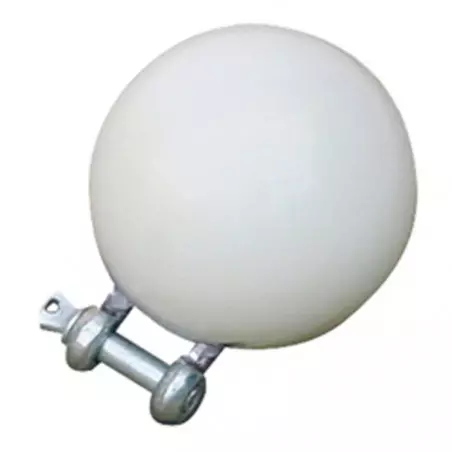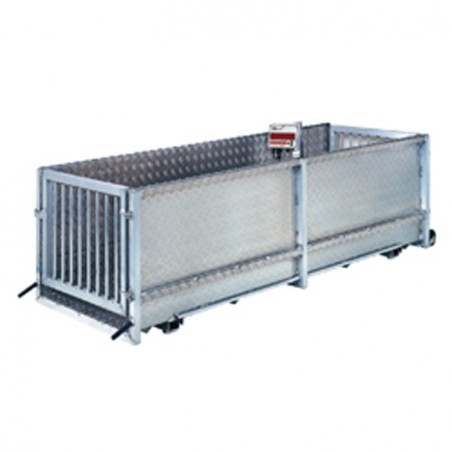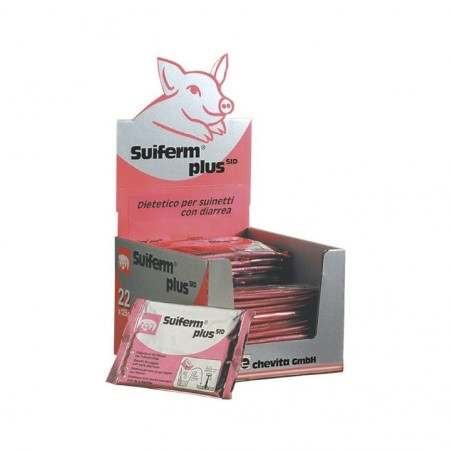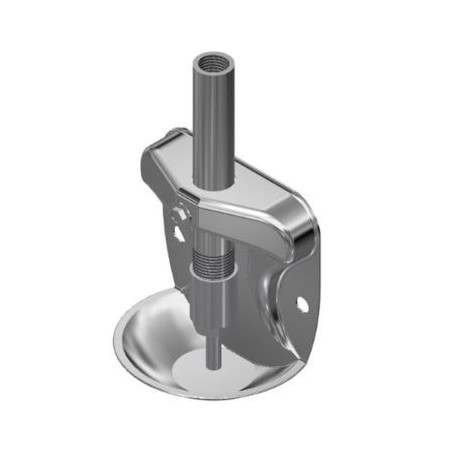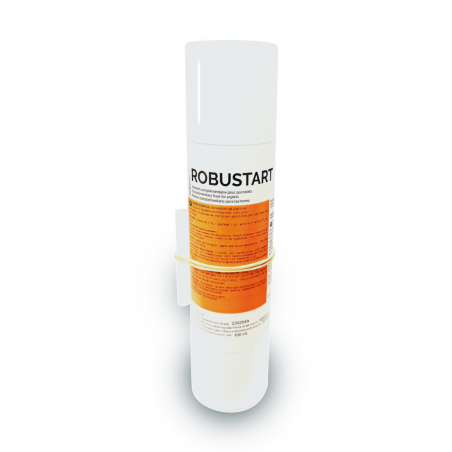In recent years, there have been numerous nutritional studies aimed at identifying alternatives to the use of zinc oxide (ZnO), whose use in therapeutic doses was banned by the EU in 2022, due to the risks that this compound poses to the environment, as well as the danger of promoting antimicrobial resistance.
However, in this new context, without ZnO, without growth promoters, and with increasing and severe control of the use of therapeutic antibiotics, little attention has been paid to the relevance of the vitamin levels in the feed, beyond the role of vitamins as essential micronutrients.

It is generally well known that deficiencies in vitamins and other micronutrients impair the immune strength of pigs, and in particular piglets, by affecting both the innate and adaptive immune response, leading to deficiencies in the overall host response to infectious and inflammatory diseases. Let's see what role some vitamins play in the different levels of the immune response in piglets, in light of some recent scientific findings.
At the level of immunity in the intestinal mucosa, both epithelial cells and immune cells express the vitamin A receptor (RAR, retinoic acid receptor) and the vitamin D receptor (VDR), demonstrating that both vitamins play an important role in supporting the integrity and functionality of the intestinal barrier. In this sense, the role of vitamin A in the development of the epithelium in the small intestine of weaned piglets was corroborated by Wang et al. (2020) in a study where it was observed that very high levels of this vitamin in feed (16 mg/kg or 53,333 IU/kg) lead to a significant increase in the expression of the Lgr5+ gene, a marker of stem cells in the small intestine (Figure 1).
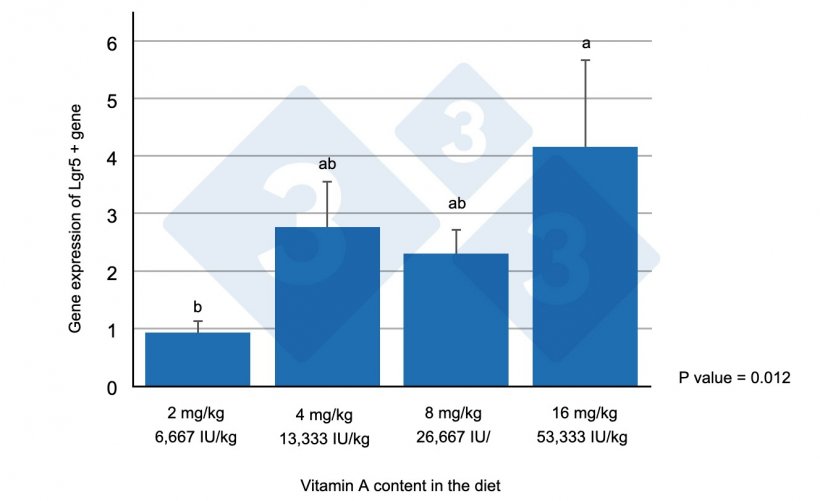
Figure 1. Expression of the Lgr5+ gene in the jejunum of weaned piglets fed with different levels of vitamin A. Different letters indicate statistically significant differences (p<0.05). Source: Wang et al. (2020)
Regarding the role of vitamin D at the intestinal level, its main functions include reducing apoptosis or cell death in inflammatory conditions -anti-inflammatory effect- (He et al., 2018), as well as increasing expression of genes encoding the synthesis of anti-inflammatory peptides, such as β-defensin, by Paneth cells in the intestine -antimicrobial effect- (Lu et al., 2018).
Continuing in the intestinal epithelium, B6 acts as a cofactor in the formation of mucins by goblet cells, due to its extensive involvement in oligosaccharide and protein synthesis (Moran, 2017). Vitamin A is also involved in mucin production, although vitamin B6 has a much more direct role (Lauridsen et al, 2021).
The inflammatory reaction in response to intestinal diseases in young animals, such as diarrhea or enteritis, generates oxidative stress that, although it has an antimicrobial role (e.g., the production of nitric oxide by phagocytic cells, which has antimicrobial properties), if this stress is exacerbated it can cause tissue damage, prolonging the inflammatory reaction, both locally and systemically (Lauridsen, 2019; Lauridsen et al., 2021). It has been shown that the inclusion of high levels of vitamin C in weaned piglet diets contaminated with mycotoxins increases the total antioxidant capacity in the liver (Shi et al., 2017; Figure 2).
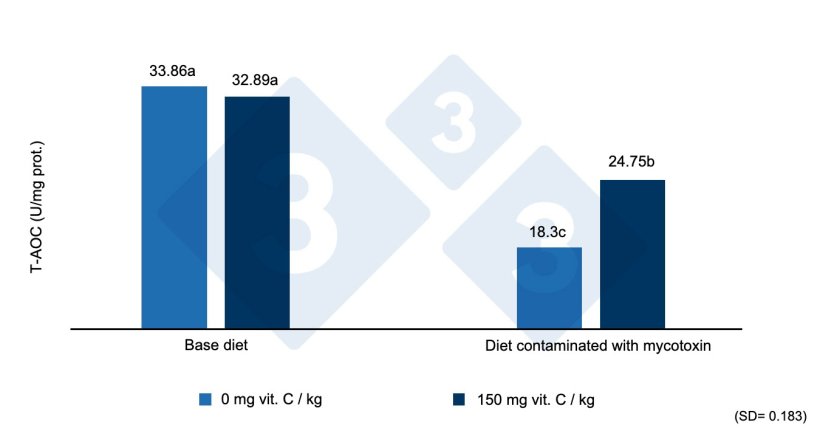
Figure 2. Total antioxidant capacity (T-AOC) in the liver of weaned piglets fed diets contaminated with zearalenone with or without high doses of vitamin C. Different letters indicate statistically significant differences (p<0.05). Source: Shi et al. (2017).
It has been shown that the production of reactive oxygen species (ROS) is increased in pigs fed diets deficient in vitamin E and selenium (Lessard et al., 1991, 1993). Therefore, vitamins C and E are clearly key players in the control of oxidative stress generated in the context of intestinal disorders in piglets. However, there is another vitamin involved in the regulation of oxidative stress; vitamin D. Thus, levels of the potent endogenous antioxidant enzyme glutathione peroxidase are significantly increased in weaned piglets when they receive high doses of the metabolite calcidiol (25(OH)D3) in their diet, with the maximum level of this antioxidant enzyme in serum corresponding to a dose of 118 micrograms of 25(OH)D3 / kg feed (Yang et al., 2018; Figure 3). The role of vitamin D in the regulation of oxidative stress would contribute to its clear anti-inflammatory effect, as previously mentioned.
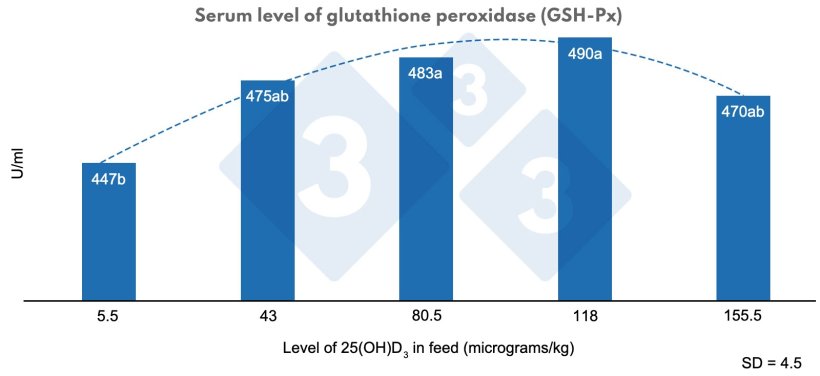
Figure 3. Effect of different levels of calcidiol (25(OH)D3) in the diet of weaned piglets on the serum level of glutathione peroxidase (GSH-Px). a, b: Different letters indicate statistically significant differences (P < 0.01) Quadratic effect, P < 0.01. Source: Yang et al. (2018).
Finally, another vitamin intervention at the immunological level is the positive effect of vitamin A on the humoral response. Hu et al. (2020) observed that the administration of 13500 IU of vitamin A/kg of feed in the diet of weaned piglets significantly increased serum levels of IgA and IgM (Figure 4). IgA is the most important immunoglobulin in the pig for mucosal immunity and the main immunoglobulin in the animal's lactation. The role of IgM is of great importance as the first defense immunoglobulin in the humoral response. In addition, IgM is a particularly effective immunoglobulin against a large number of Gram-negative bacteria (Sánchez-Vizcaino, 2010).
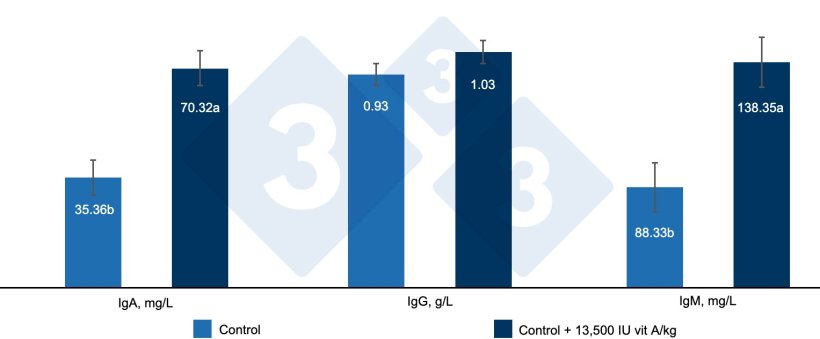
Figure 4. Effect of including 13500 IU vitamin A / kg feed on serum immunoglobulins in weaned piglets. a, b: Different letters indicate statistically significant differences (P < 0.05). Source: Hu et al (2020).
In short, these recent investigations on the response to different levels of vitamins in feed for weaned piglets demonstrate the beneficial effect of high levels on the immune response of the animals. In this regard, genetics companies are updating and increasing their own recommendations for vitamin levels. Thus, considering the current scenario, without ZnO and with increasing restrictions on the use of drugs, the revision of vitamin levels in piglet feeds is essential.








